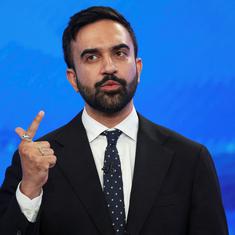The flawed Doha agreement has been followed by the United States President Biden’s controversial decision to withdraw US forces from Afghanistan with no clear sign of the future direction of America’s Afghan policy. Pakistan’s Afghan policy also remains opaque and the Afghan government continues to live in an illusionary world.
All this has emboldened the Afghan Taliban, who are ever more committed to seeking a military solution to the conflict and are eyeing a triumphal return to power. Undoubtedly, the surge in violence, including the horrific attacks on civilians, is aimed at increasing psychological pressure on the weak government in Kabul.
Pakistan is not responsible for Afghanistan’s weaknesses, but cannot escape the responsibility for the Taliban’s strength. Yet one can take Pakistan’s declared policy at face value that it seeks a peaceful Afghanistan, and supports an Afghan-led, Afghan-owned peace process. The assumptions underlying it though are faulty.
Risk and opportunity
The Afghan government is too weak, divided and lacking in legitimacy, to lead or own the peace process. And Pakistan’s declared policy collides with its operational policy that has tolerated the use of its space by the Taliban leadership. Pakistan might think it would be a good policy to stay away from the Afghan conflict but the conflict will not stay away from Pakistan. Pakistan may not have been party to the conflict but has been a part of it.
Afghanistan that began unravelling in 1973 with the overthrow of the monarchy and has seen one of the most devastating conflicts of our times is a very different place now, for better and for worse. It is host to multiple conflicts among the Afghans. The Taliban challenge is not a conflict among the Afghans, but between Afghans and the Taliban as defined in President Ashraf Ghani’s article “Afghanistan’s Moment of Risk and Opportunity”, in Foreign Affairs.
The Ghani view is likely shared by the majority of Afghans for whom it is important that education facilities have expanded, women’s rights, including work opportunities, have improved, the media has been revived, and Afghans have sampled democracy, however, tainted. Granted, the government is corrupt and discredited. But Taliban rule is no alternative.

There is a new politics also with an enhanced political consciousness among the non-Pakhtuns especially the Tajiks who are no longer willing to accept Pakhtun domination, whether from the monarchist past or the Taliban brand of the future.
The majority of Afghans, therefore, have something to defend and fight for. But history does not give us much confidence about Afghans reaching an accord either peacefully or without external intervention. They would rather fight to have full power.
A Taliban victory thus is not likely to happen without an armed conflict. And it will be bloody as it is not the 1990s when the Taliban literally had a walkover. They will now have the Afghan National Security Forces (which will not disintegrate too easily) to contend with and a government in Kabul that would still be receiving US financial and diplomatic support.
In order to fight their way to power, the Taliban would therefore need all the allies they can get from wherever including Al Qaeda, the drug mafia and others with a vested interest in Afghanistan’s instability. Most importantly, the Taliban’s strategy will rely on Pakistan’s role as a hinterland where they will tap into the country’s militancy infrastructure.
Time to act
The Taliban in power will be too independent and have reverse leverage over Pakistan where they can inspire and support extremist organisations, while a losing Taliban would be a source of instability in the border areas. That makes the Taliban a Pakistan problem too. Pakistan would have to expel them from these areas or force them to share power and be integrated with Afghan society. Inaction can draw global criticism.
Pakistan may not have influence with the Taliban but has some leverage. It has to act now: pressure the Taliban and launch an earnest campaign at home against extremism, sectarianism, jihadists and the Taliban’s Pakistan derivatives. As for Afghanistan, it should stop thinking that Pakistan should solve its Taliban problem and that a campaign to malign Islamabad, as we witnessed in President Ghani’s outburst in Der Speigel, might help. The solution to the Taliban problem primarily lies within Afghanistan.
Both Pakistan and Afghanistan have to realise they stand at the crossroads of many shared nightmares. Neither can meet these challenges alone. They will have to work together to improve their political relations and have a coordinated Taliban strategy, joint border control and counterterrorism cooperation.
At stake is both countries’ future, which is regional connectivity, economic interdependence and a peaceful neighbourhood. The alternative is a future owned by the Taliban.
This article first appeared in Dawn.










